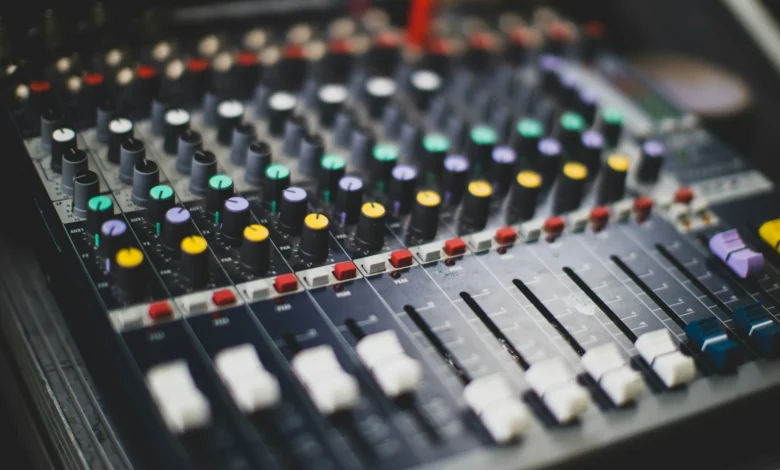
Producing High-Quality Sound Recording for Videos or Movies
The audio is as important in making a film or video as the visuals because these mechanics, down to the slightest hum in the background, play an integral role in the final production. Visit https://www.makeuseof.com/tag/essential-tips-record-better-audio/ for tips on recording better audio.
Getting the sound right takes great attention to detail and knowledge of varied microphones and technical equipment.
As a young person exploring the idea of making films without the luxury of a massive production budget or complex equipment, you can find simple, albeit valuable, tips meant to enhance your amateur film sound quality.
Building on this knowledge and these skills will put you on the path to a professional career in one of a number of fields, such as a sound recording artist. See adrianbell.net to learn of an award-winning sound recording artist and his many achievements.
Enhancing Audio Quality for a Professional Result
Recording audio for films seems like it would be almost effortless because the experts want you to believe it’s simple. In fact, many resources go into producing high-quality sound. Verbal communication, including audio recordings, must be concise, clear, and without distraction.
Anything less than that will be judged harshly as subpar and frustrate audiences. That can result in lost sales and viewers seeking a more professional experience, one that shows a more concerted effort and time-intensive approach.
As someone new working toward a professional production career, straightforward techniques help enhance audio recording sound quality; follow these simple tips.
The Microphone
Many amateur filmmakers struggle with microphone placement, which has a noticeable effect on audio quality. The speaker should be roughly three inches from the microphone and align with the individual’s mouth.
The further away, the more difficult it is to achieve clarity, and if it’s situated too high or low, it’s more likely to pick up distracting noises. Once you designate a space for the microphone, it needs to remain in that spot for the entire product; consistency is critical.
If you notice, when watching a program on TV, the primary show plays at one audio level while the commercials are much louder. Moving the microphone in the middle of a recording, you’ll experience fluctuations in your audio levels.
The Background
Filmmakers want viewers to understand the message being conveyed after many resources have been spent producing a film or video. When loads of background noises disrupt the audio recording, the audience can be distracted from the message.
While you may be oblivious to the sounds around you, the listeners will readily pick up even the slightest sound, whether someone coughs, the wind gusts when a door opens, or someone stands up and walks out of the room. There must be no sounds.
The recommendation is that a recording studio be used to avoid any distractions or potential echoes. These are not always accessible, making it necessary to create a space that is as soundproof as possible.
A small, carpeted room with furnishings and wall art will be less prone to echoes. Recognizing potential background distractions in the vicinity is critical to reduce disruptions. Some include:
- Fridge
- Electronics
- Phones
- Fans
- Windows
- HVAC
- Traffic
The Quality
Initially, high-quality equipment might be challenging to buy due to budget constraints. If you’re using old or cheap equipment, the sound will reflect the lower quality. Go here for guidance on sound recording for video or film on a budget.
A first investment should be in a professional microphone and ensure you have access to the best editing software for cleaning up the audio. The type of microphone you choose will depend on the kind of recording you intend to make, whether films, videos, or starting with podcasts or music. A few key factors:
- Reliability and longevity
- Frequency of use
- Operating range
- Extra features
As someone new to audio recording, you should avoid a microphone with all the bells and whistles in favor of a more simplistic and straightforward option. Over time, as you become comfortable with recording, you can advance to extra features.
Remember, the microphone needs to remain stable throughout production. When investing in a high-quality microphone, you should compare different stands.
- Tripod: The vertical adjustable pole stands mounted on a three-pronged base.
- Round-base: The round base is compact compared to the tripod, less of a tripping hazard, ideal for someone animatedly moving around while recording.
- Tripod boom: A tripod boom stand has a three-prong base, but the vertical adjustable pole has an added pole extending to give angles when recording.
- Desktop stand: This is a small stand that attaches to a desk.
- Overhead: The most complex and sturdiest stand with a boom arm that extends the furthest. Due to its weight, the stand is situated on wheels to make moving easier, but it can also lock in place for security.
Final Thoughts
These tips will help you capture better sound quality as you start your journey into audio recording for videos or films.







